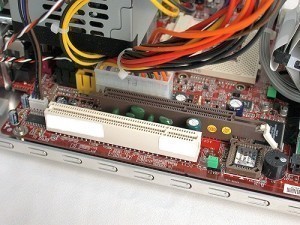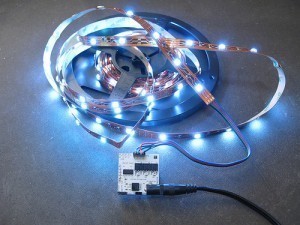AGP Slot Dimensions
The AGP slot size is 32 (width in bits).  The capacity is good for up to 2133 MB/s and the style is parallel.
The capacity is good for up to 2133 MB/s and the style is parallel.
AGP vs. PCI
The AGP came out as high end 3D graphics began putting a strain on the PCI’s capability. Because the PCI used shared bandwidth, it took much longer to render complex images. Basically, what the AGP card does is to interact directly with the processor. This allowed for faster display of high end graphics.
Moreover, the PCI had to take a texture from the RAM and into the framebuffer. The AGP on the other hand, could access information directly from the memory.
AGP Versions
The AGP slot sizes have remained the same but numerous versions emerged. The first one came out in 1997. Called the AGP specification 1.0, it had 1x and 2x speeds. The second specification had AGP 4x and the third specs 8x.
The AGP 1x is a 32 bit channel. It works at 66 MHz. The result is a transfer rate of 266 megabytes per second (MB/s). This was a significant leap from the old PCI bus standard (33 MHz / 32-bit). The AGP 2x worked at 66 MHz. But it was double pumped, so it operated at 133 MHz.
This led to a maximum data volume of 533 MB/s. AGP 4x was also a 32 bit channel. However, quad pumping produced rates of 266 MHz. This allowed for data rates of 1066 MB/s (1 GB). The signaling was 1.5 v.
The AGP slot size remained the same with the AGP 8X. However the AGP 8x worked at 533 MHz. This permitted the transfer of data up to 2133 MB/s. The signaling was 0.8 v.
The AGP Extensions
The AGP Pro was a bigger slot that came with more pins. This slot was designed for use on workstations that used CAD applications. The 64-bit AGP was developed but it never got off the ground. There are also unofficial extensions of the AGP. They were produced by different manufacturers.
For the internal AGP interface, the Ultra-AGP and the Ultra-AGPII came out. The Ultra-AGP provided support for AGP 8x. The Ultra-AGPII on the other hand, had a bandwidth of up to 3.2GB/s.
The AGP slot sizes meant difficulties when it came to connecting them with an old PCI bus. The AGP Express was developed to address this problem. What the AGP Express does is to permit connection of an AGP card to the PCI bus. This in turn would be on a PCI Express motherboard.
The main attraction of the AGP Express is it allows computer owners to replace their old motherboard without purchasing a PCIe (PCI Express) graphics card.
The AGI (ASRock Graphics Interface) was designed to support Asrock motherboards. Another variant is the Biostar Xtreme Graphics Port (works like the AGI). But like the other cards, the compatibility has reduced its performance.
The evolution of AGP slot sizes and versions have almost completely stopped thanks to the emergence of PCI Express. Only motherboards that use older chipsets can work with the device.





